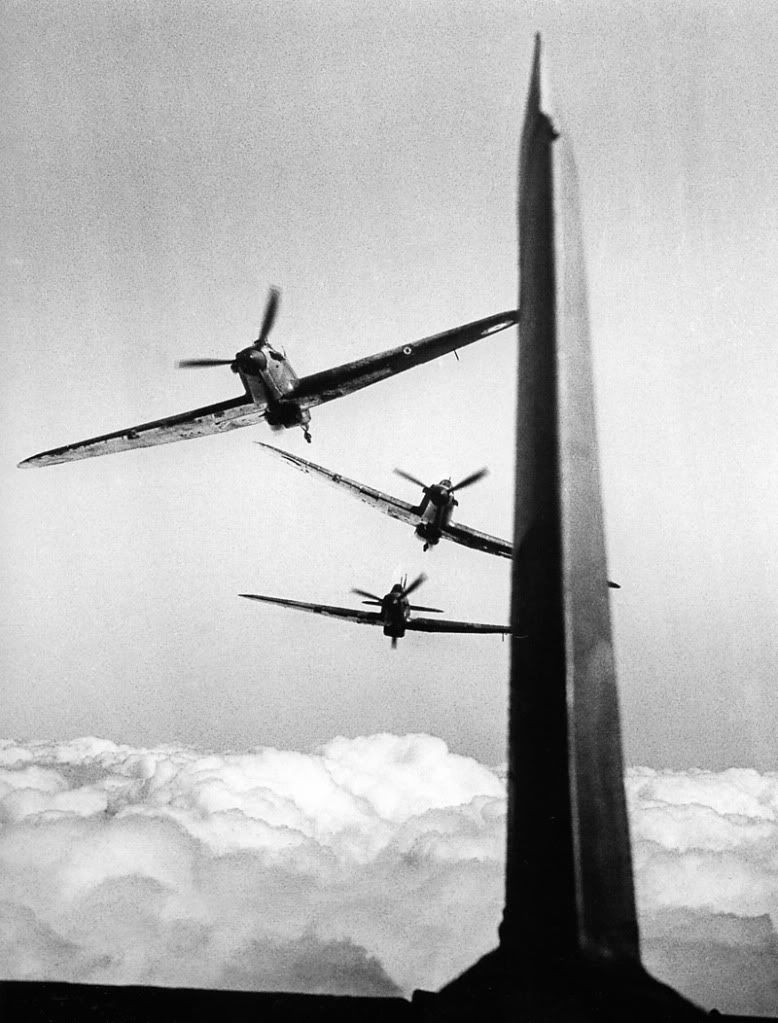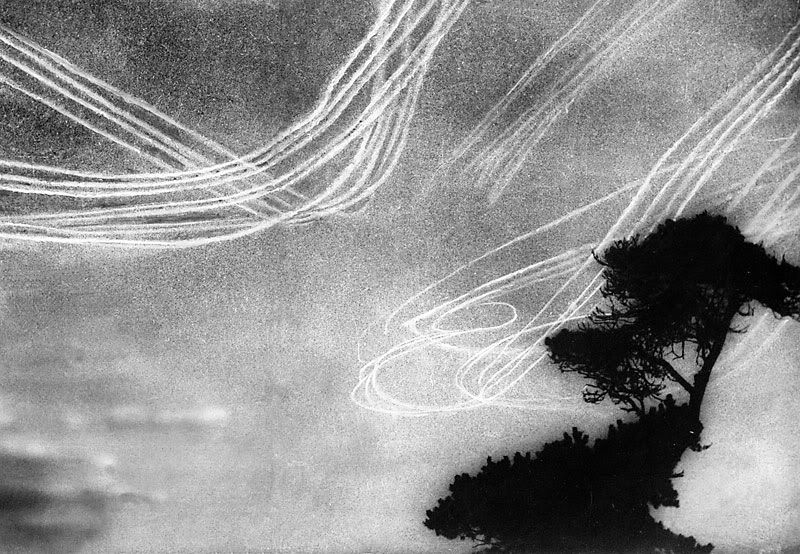Part 17.
July, 1940
AIR BATTLE OVER THE CHANNEL
BY A FLYING OFFICER
The following description of one of the biggest air battles since raids on this country began is given by a young Fighter pilot who fought in the battle. He is a flying officer and was recently awarded the D.F.C. On Wednesday he destroyed one Me. 109 and helped to destroy a Dornier 215. His squadron that day shot down their fiftieth enemy aircraft.
I suppose many people who watched the air battle from the shore saw a lot more than I did, although I was in it. As you can imagine, you don't see anything but your own particular part of the show when you are actually fighting.
Our squadron was ordered to fly to the spot where ships were being attacked.
In a few minutes we had reached the scene. We were at 8,000 feet, the clouds were about 2,000 to 3,000 feet above us, and below we saw very clearly a line of ships and a formation of bombers about to attack.
The bombers were between 100 to 200 feet below us. There were twenty-four Dorniers altogether and they apparently in�tended to attack in three ways. The first bunch of bombers had already dropped their bombs when we got there and the second formation was about to go in. The third wave never delivered an attack at all. It was a thrilling sight I must confess, as I looked down on the tiny ships below and saw two long lines of broken water where the first lot of bombs had fallen. There were two distinct lines of disturbed water near the ships and just ahead were fountains of water leaping skywards from bombs newly dropped. In a second or two the sea down below spouted up to the height of about 50 feet or more in two lines alongside the convoy.
Our squadron leader gave the order to attack. Down we went. He led one flight against a formation of bombers and I led my flight over the starboard side. It was a simultaneous attack. We went screaming down and pumped lead into our targets. We shook them up quite a bit. Then I broke away and looked round for a prospective victim, and saw, some distance away, a Dornier lagging behind the first formation. I flew after it, accompanied by two other members of my flight, and the enemy went into a gentle dive turning towards the French coast. He was doing a steady 300 miles an hour in that gentle dive, but we overtook him and started firing at him.
He was in obvious distress. When fifteen miles out from the English coast we turned back to rejoin the main battle.
I was just turning round when I saw an Me. 109 come hurtling at me. He came from above and in front of me, so I made a quick turn and dived after him. I was then at about 5,000 feet and when I began to chase him down to the sea he was a good 800 yards in front. He was going very fast, and I had to do 400 miles an hour to catch him up, or rather to get him nicely within range. Then, before I could fire, he flattened out no more than 50 feet above the sea level, and went streaking for home. I followed him, and we still were doing a good 400 miles an hour when I pressed the gun button. First one short burst of less than one second's duration, then another, and then another, and finally a fifth short burst, all aimed very deliberately. Suddenly the Messerschmitt's port wing dropped down. The starboard wing went up, and then in a flash his nose went down and he was gone. He simply vanished into the sea.
I hadn't time to look round for him, because almost at the precise moment he disappeared from my gun sights I felt a sting in my leg. It was a sting from a splinter of my aircraft, which had been hit by enemy bullets. There were some Messerschmitt 109s right on my tail. Just as I had been firing at the enemy fighter which had now gone, three of his mates had been firing at me. I did a quick turn and made for home, but it wasn't quite so easy as all that. My attacker had put my port aileron out of action, so that I could hardly turn on the left side. The control column went rough on that side too, and then I realised that my engine was beginning to run not quite so smoothly.
There were no clouds to hide in except those up at 10,000 feet and they seemed miles away. Practically all my ammunition had gone, so it would have been suicide for me to try and make a fight of it. All I could hope for was to get back home. I watched my pursuers carefully. When they got near me I made a quick turn to the right and saw their tracer bullets go past my tail. I gained a bit on them and then they overtook me again, and once more I turned when I thought they had me within range. I did that at least twelve times. All the time I was climbing slightly and when I reached the coast I was at 2,000 feet. My course had been rather like a staircase. They had not hit my aircraft after that first surprise attack and finally, on the coast, they turned back.
I went on and landed at my home aerodrome, got a fresh Hurricane, and rejoined my squadron before going on another patrol.

Hurricanes.

Vapour trails signal the start of an air battle.

Dorniers passing Beachy Head.